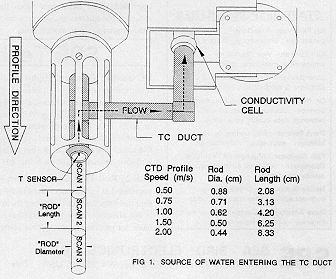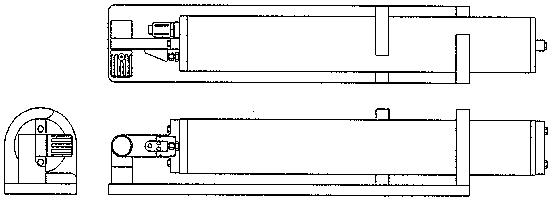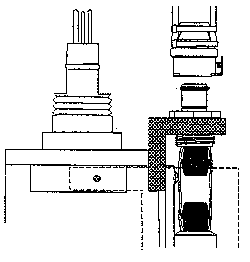![]()
A publication of Sea-Bird Electronics, Inc. Issue #3 Aug 1992
CUSTOMERS PLEASED WITH 911plus CTD
Orders for our new 911plus CTD are coming in at a rate of almost one per week. Since February, 1992, when the first 911plus was shipped, Sea-Bird has delivered 17 new systems and has 6 on order for delivery within the next month. In addition, eight 9/11 upgrades have also been delivered. Because of manufacturing efficiencies resulting from the new design, average delivery time has decreased to 30 days, and several new systems have already been to sea.
"... we have made a good choice for our WOCE work next year."
Users are reporting excellent results. The New Zealand Oceanographic Institute, DSIR wrote, "We have just returned from trialing our new SBE 911plus CTD at sea. Although we have yet to process the data set and therefore cannot judge the final data quality, almost every aspect of the instrument's off-the-shelf performance matched or exceeded our expectations. In particular, the primary and secondary temperatures and conductivities (their CTD has optional dual C & T sensors) gave excellent agreement throughout the profiles, salinity-spiking error appeared to be minimal, and there was no identifiable instrument hysteresis between down and up casts - and all this from the real-time data. It seems we have made a good choice for our WOCE work next year."
A Quick Look at the TC Duct:
 Spiking will occur unless salinity and
density are calculated using the temperature and conductivity
values measured on the same "parcel" of water. To
reduce salinity and density spiking to the lowest possible level without
the loss of resolution caused by data averaging, SBE 9/11 and
911plus CTD systems (and some SBE 25
SEALOGGERs) employ
Sea-Bird's "TC Ducted Flow" feature combined with a
constant-speed pump.
Spiking will occur unless salinity and
density are calculated using the temperature and conductivity
values measured on the same "parcel" of water. To
reduce salinity and density spiking to the lowest possible level without
the loss of resolution caused by data averaging, SBE 9/11 and
911plus CTD systems (and some SBE 25
SEALOGGERs) employ
Sea-Bird's "TC Ducted Flow" feature combined with a
constant-speed pump.
As shown in Figure 1, the intake water is immediately measured by the temperature sensor, and subsequently flows though the duct and into the conductivity cell. Because the flow rate is controlled by the pump, the sensor time responses are unaffected by changes in profile speed, and the time delay between temperature and conductivity measurement can be canceled in real-time by the CTD's microprocessor.
The flow characteristics of this system are well understood. Water that enters the TC duct comes from a cylinder (or "rod") centered just below the duct. The volume of this rod is set by the volume flow rate of the pump and the dimensions of the rod are determined by the CTD profiling speed as shown in the adjacent table. Rigorous analysis is complex, but the concept may be understood by the following argument: If the pump draws water into the TC Duct at exactly the CTD profile speed, then water entering the duct must come from a cylinder of water having a diameter exactly equal to the ID of the TC Duct intake (0.4 cm). The CTD in this case draws in new water at just the rate that its downward movement is causing new water to be presented. At any other profile speed, the "rod" diameter will become larger or smaller to maintain the 30 ml/second volume demanded by the pump.
Because the CTD integrates each measurement for exactly 1/24 second, successive scans correspond to the average temperature and conductivity of discrete cylinders stacked end-to-end along the profile trajectory of the CTD.
SOFTWARE
Computation of pH - Thanks to the diligence of Greg White at Dames & Moore in Unalaska, Alaska, an error was discovered in the algorithm used to compute pH in all versions of SEASOFT prior to 4.008. The incorrect algorithm ignores electrode potentials and temperature compensation used to create a 0 volt output at pH 7. The relationship between the two equations is pH[new] = pH[old] + (7-7*Tc/T), where Tc is the sensor temperature [°K] during calibration and T is the temperature [°K] of the water during the measurement.
Data Upload Rate is Hardware Dependent - SEASOFT will upload data from internal recording instruments at various rates up to 38400 baud. However, not all computers can go this fast. As a general rule, maximum baud rates by computer type are: PC/XT = 9600, AT (286) = 19200, 386/486 = 38400. If the upload rate is too fast for the computer, files can be truncated or garbled. If this happens, set the baud rate lower and upload the data again.
PRODUCTS & SERVICES
The SBE 26 SEAGAUGE Wave & Tide Recorder has undergone several design refinements. A copolymer plastic housing with titanium end cap and hardware make it practically impervious to salt water. An oil-filled bladder under a protective cover replaces the nylon capillary tube on the pressure port. This prevents air or water from getting into the capillary and degrading the pressure response. A mounting fixture is now available to allow a diver to remove and reinstall the SEAGAUGE in the same position using only a pair of wire cutters to remove a nylon cable tie.
SBE 26 SEAGAUGE in Mounting Fixture

SBE 26 UPGRADE OFFER - For current owners who purchase a new mounting fixture, we will retrofit their SBE 26 with the new pressure port configuration at no charge. For those wanting only to upgrade the pressure port, the cost will be modest.
 New
Conductivity Tubing Connector for SBE 9,
9plus,
& 25 CTDs
New
Conductivity Tubing Connector for SBE 9,
9plus,
& 25 CTDs
A strain-relieved tubing connector is now used
on SBE 9plus and SBE 25 CTDs to connect the pump intake
tubing to the glass conductivity cell. Shown at the right, a
locking, quick-disconnect fitting is mounted to a bracket on the
SBE 4 conductivity sensor. The mating connector attached to the
pump tubing allows easy removal and installation without
subjecting the glass cell end to stress. SBE 4s used on CTDs will
be upgraded at no extra cost when they are returned for
calibration, or users may order field upgrade kits at modest
cost.
SBE TECHNICAL CORNER
DO Sensor Noise and High-reading Problem - SBE 22, SBE 23, and SBE 30 dissolved oxygen sensors (SBE 13 is not affected) have a circuit configuration that under some conditions allows a small current to flow between the sensor's zinc anode and the oxygen module's gold cathode. The effect may appear as erroneously high or noisy DO, but the problem is easily resolved by removing a resistor from the sensor electronics PC board. All owners of these sensors should contact Sea-Bird Customer Service to get do-it-yourself instructions or arrange for the rework. We will also be mailing letters about this to all owners of record.
SBE 25 Real-Time Clock Problem - On power up, SEALOGGER CTDs with firmware versions 3.0 - 3.0e may read the frequency of the real-time clock before the power supplies have stabilized, causing them to keep time incorrectly. Operational reliability is not affected. New EPROMs have been sent to owners of record, however if you have not received yours, please contact Sea-Bird Customer Service.
![]()
Sea-Bird Home Phone: (+1) 425-643-9866 Fax: (+1) 425-643-9954 E-mail: seabird@seabird.com